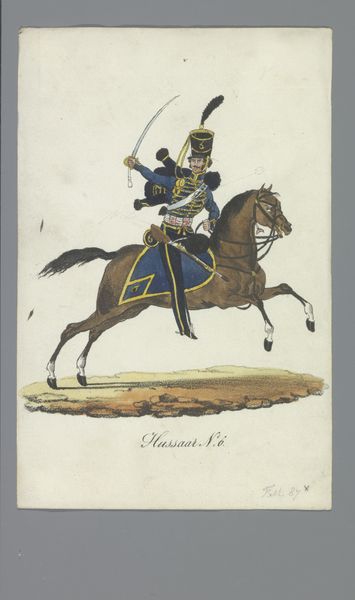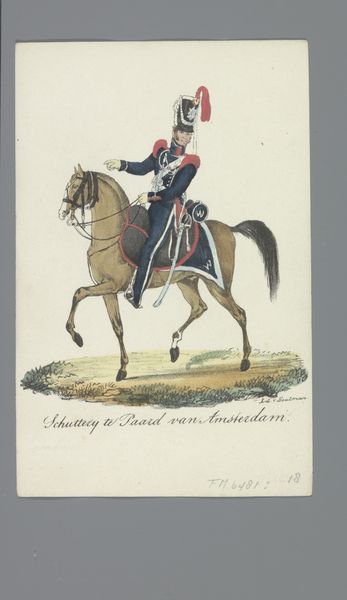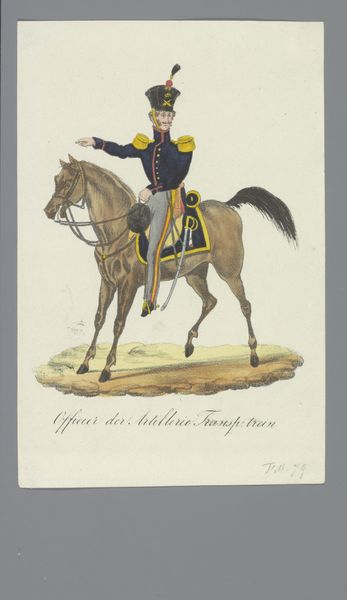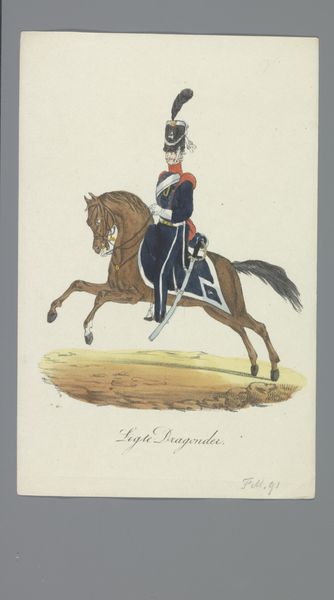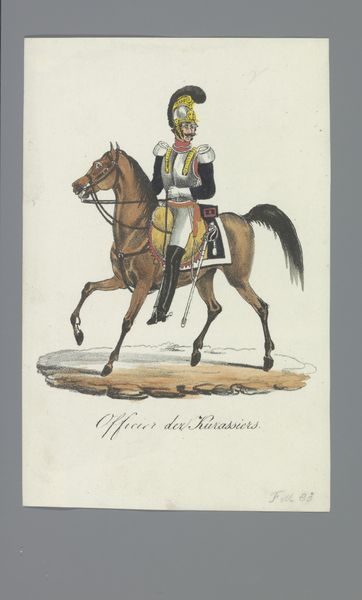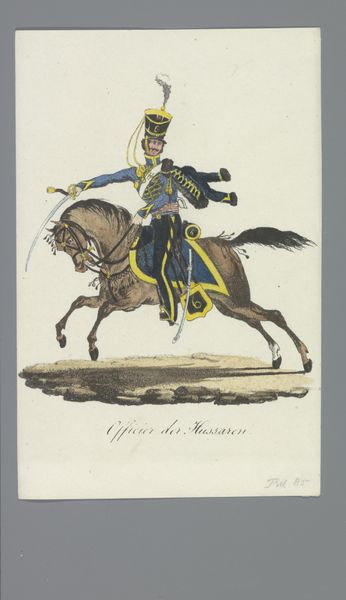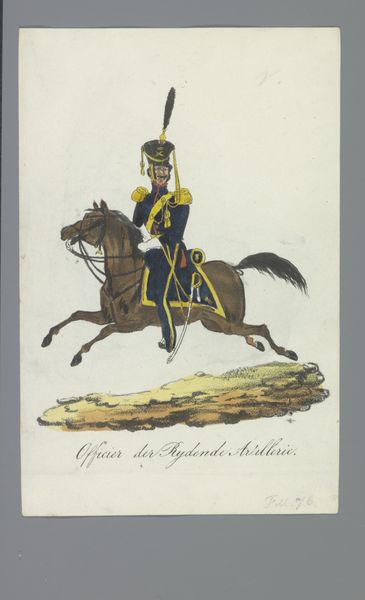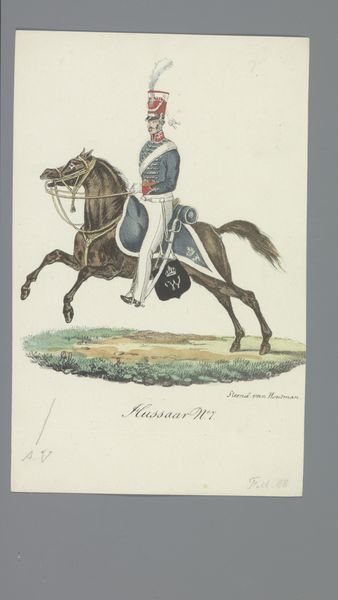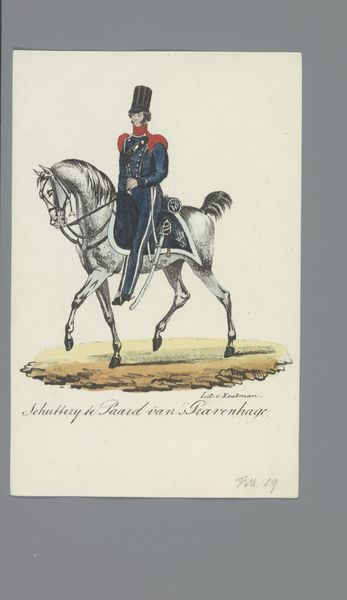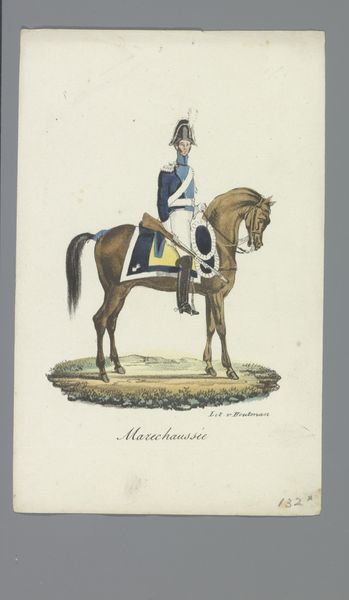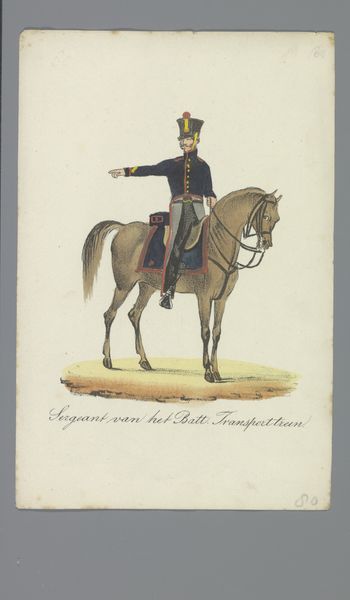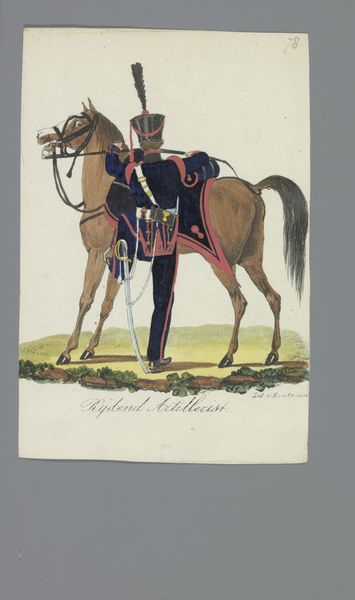
drawing, painting, watercolor
#
portrait
#
drawing
#
painting
#
watercolor
#
romanticism
#
costume
#
sketchbook drawing
#
watercolour illustration
#
genre-painting
#
watercolor
Dimensions: height 170 mm, width 110 mm
Copyright: Rijks Museum: Open Domain
Curator: Well, hello there. Look at this rather dashing figure! We're looking at "Hussaar van het Reg.t No. 6," created sometime between 1835 and 1850, attributed to Albertus Verhoesen. It’s currently part of the Rijksmuseum collection, rendered in watercolor and other drawing materials. Editor: Oh, he’s leaping off the page, isn't he? So theatrical! All bold motion frozen mid-gallop... a very spirited horse. I feel as if I’ve just walked into some grand narrative unfolding! Curator: That spirit encapsulates the Romanticism that defines the period. Think of it: military genre painting emerging alongside burgeoning national identities. Editor: It's not quite an all-out battle scene though, is it? More about presenting an image, wouldn't you agree? I can practically smell the polished leather and hear the trumpet fanfare. It almost feels like this lone horseman wants to be idolized in this artwork. Curator: Absolutely. While combat may have been chaotic and brutal, artists selected and stylized what was shared to the public, particularly with those in positions of power. And in many ways this picture immortalized not just the man but his very office as Hussaar within this regiment. Editor: I'm so taken by the detail considering it is watercolor, so fine it has captured so much character. It’s a glimpse into their world. The way the light catches on the saber, too! Just marvelous to observe this individual so vividly and dynamically represented for eternity! Curator: What's striking is how the individual’s power and costume become entwined and elevated above all else in importance. Art helped craft heroes. The placement within our national museum also continues that heroic memory for better and worse in a way. Editor: Looking closer, what does the "No. 6" tell us? This man may be exceptional but how do we begin to see all of those outside his status too? Curator: Good question. The 'No. 6' simply identifies him within the 6th regiment. We can start looking outside just one Hussaar by asking who are paintings being made for, who is being memorialized, and also begin listening to stories by individuals whose legacies are not so obviously and vibrantly celebrated within our culture? Editor: Oh, definitely something to contemplate. Now when I see those regal blues I won’t forget who is always missing from the portrait too!
Comments
No comments
Be the first to comment and join the conversation on the ultimate creative platform.
